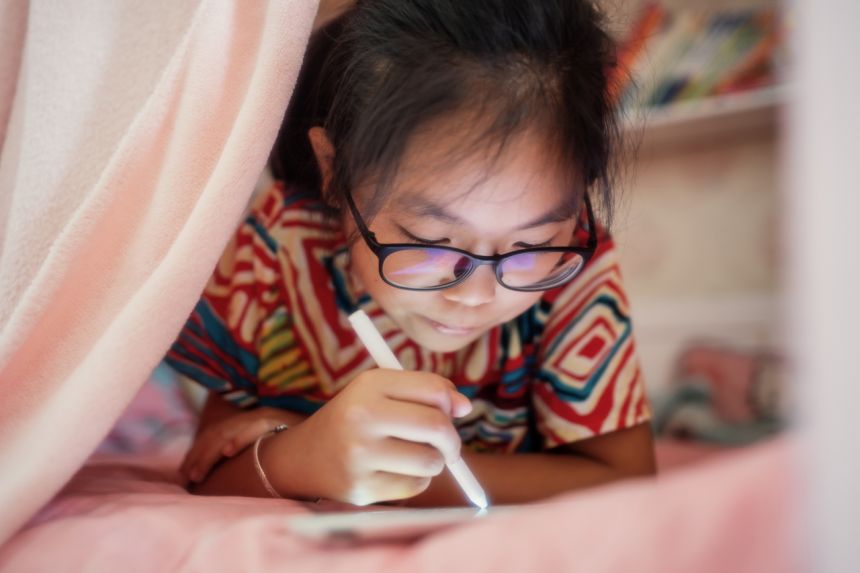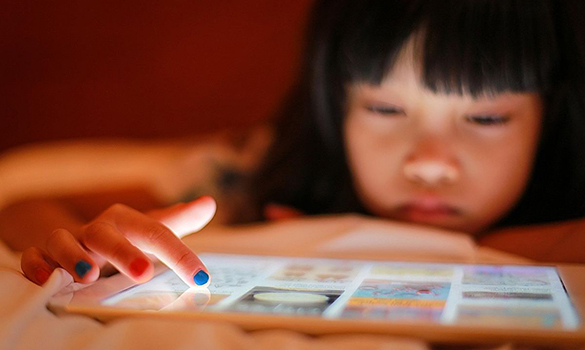
Home Based Learning (HBL) and Myopia
It has been more than a year since Home-based learning (HBL) was implemented. Over this period we have seen more children with faster myopia progression rates anecdotally. While searching for research papers to support my view, many experts around the world expressed caution about the potential risk for a further myopia boom during the COVID-19 pandemic.
How does Myopia increase?

Photo: Singapore National Eye Centre
It is a known fact that increased indoor time [1] accompanied with decreased outdoor time [2], are 2 main contributing factors for myopia growth. HBL increases digital screen time, conducting lessons on the proximal computer screen instead of the spacious classroom. Furthermore, outdoor activities in school, which was deliberately integrated within our education system in efforts to control myopia [3], is reduced as a result.
More than just wearing glasses
Remarks like “Your glasses will be thicker and heavier now”, “You need to wear glasses more often now” are commonly made when parents realize that their child’s myopia increases. Followed by questions such as “Can LASIK correct myopia?” and “When can my child do LASIK?”. Aesthetics reasons seemed to be the main concern expressed. However, there are more severe consequences to it.
Anatomically, myopia stretches our eyeball to become more elongated. This results in higher risk of irreversible pathological issues such as retinal detachment, glaucoma, and macular degeneration. In short, the higher the myopia degree, the more vulnerable the eyeball is to eye diseases. Clearly, myopia is more than just wearing glasses.
More than just Myopia
Apart from myopia, behavioral and psychological changes were observed with moderate use of screen time (4hrs/day). These include less curiosity, lower self-control, more distractibility, more difficulties in making friends and less emotional stability [4].
Moving forward

Photo: The Straits Times
After 1 circuit breaker and 2 heighten alerts, our education system seems to be more well prepared for any sudden HBL. Although school closure may be short-lived, the increased adoption and dependency on such digital tools may persist intermittently or even after the COVID-19 pandemic. While the pandemic may end in due time, the myopia epidemic is here to stay.
Easier said than done, parents can be more mindful of the following:
Limit screen time for learning experience rather than recreational purposes
Allocate 2-3 hours of outdoor time per day [1]
Ensure adequate indoor lighting
Be role models by reducing own digital device usage
As children may not be able to verbalize their visual complaints, eye checks should be done regularly. Furthermore, public awareness about the dangers and intervention of myopia should also be better communicated.
For more information, kindly contact us here.
- Enthoven CA, Tideman JWL, Polling JR, et al. The impact of computer use on myopia development in childhood: The Generation R study. Pre Med 2020; 132:105988
- Wu P, Chen CT, Lin KK, et al. Myopia prevention and outdoor light intensity in a school-based cluster randomized trial. Ophthalmology 2018;125:1239-1250
- Ang M, Flanagan JL, Wong CW, et al. Review: Myopia control strategies recommendations from the 2018 WHO/IAPB/BHVI Meeting on Myopia. Br J Ophthalmol http://doi.org?10.1136/bjophthalmol-2019-315575.2020.02.26
- Twenge JM, Campbell WK. Associations between screen time and lower psychological well-being among children and adolescents: evidence from a population-based study. Prev Med Rep 2018;12:271-283
Posted in Articles and tagged digital eye strain, eye test, home based learning, myopia



